
Animal
11:27, 10-Jun-2019
Monkey Mania: Francois's langur
Updated
12:00, 10-Jun-2019
By Li Yunqi
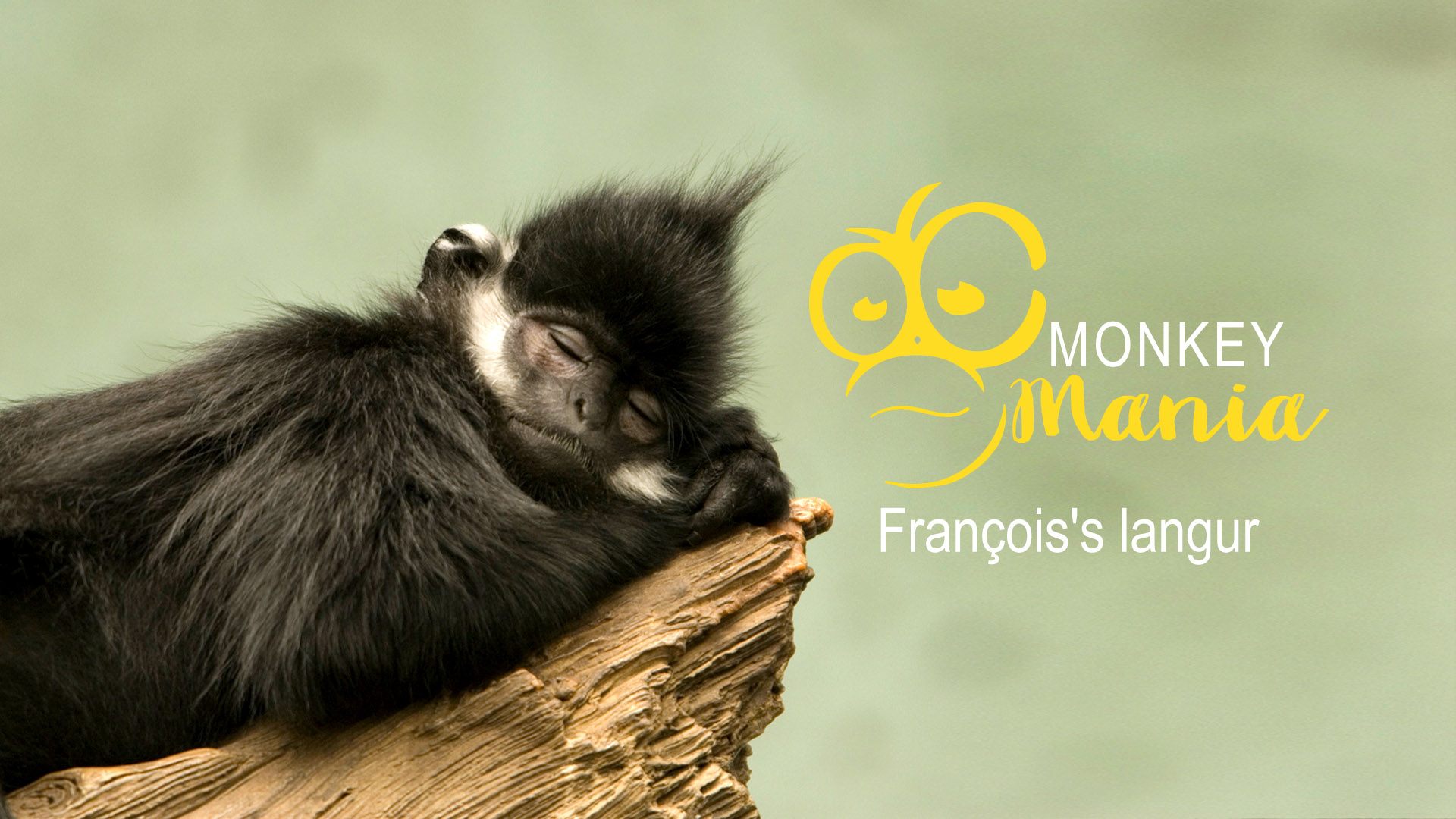
Covered in silky black fur all over and small in size, the Francois's langur is easy to identify due to the white sideburns on its cheeks.
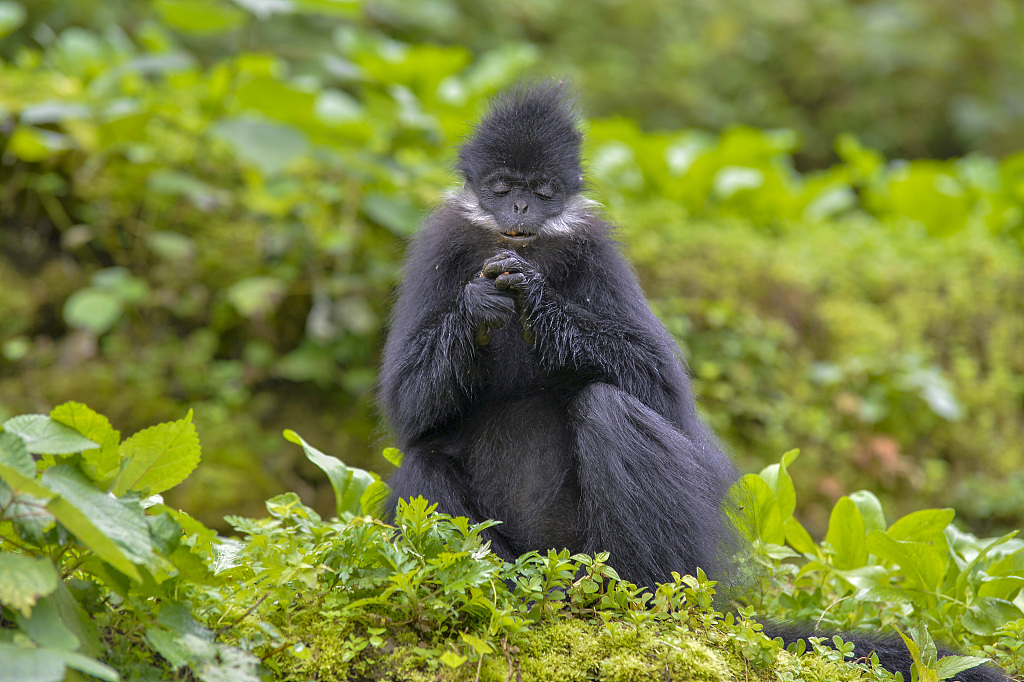
A Francois's langur is having a peaceful moment sitting on leaves. /VCG Photo
A Francois's langur is having a peaceful moment sitting on leaves. /VCG Photo
Mostly inhabiting the karst area in south China's Guangxi Province, the species is named after Auguste François (1857–1935), who was the French Consul to Longzhou County in Guangxi Province. The population of this endangered species is now around 2,000 globally.
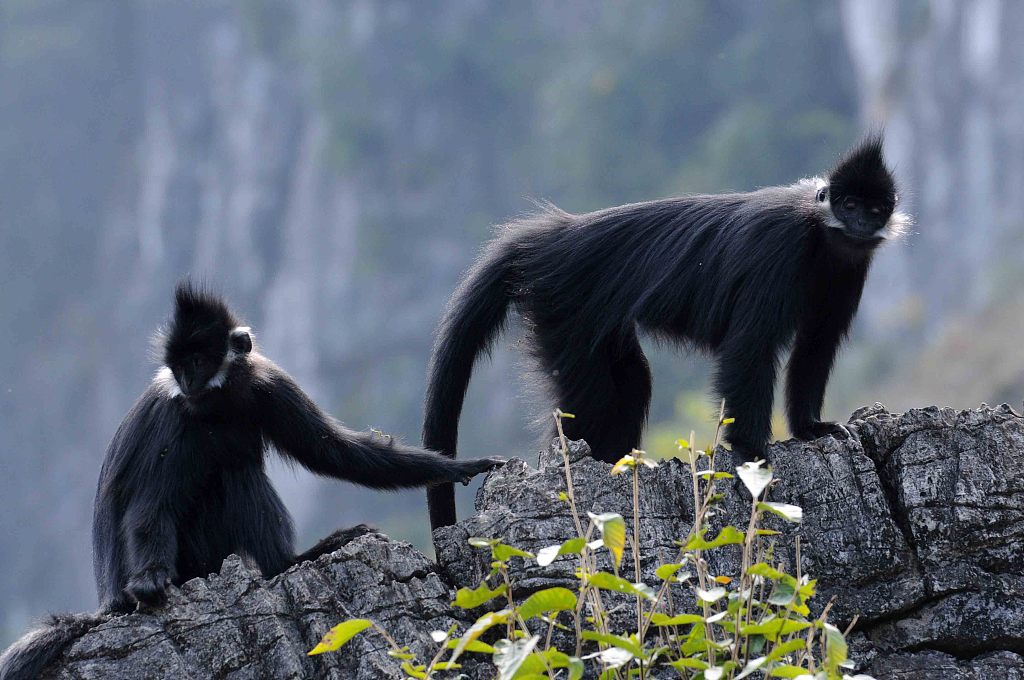
Two wild Francois's langurs are resting on limestone. /VCG Photo
Two wild Francois's langurs are resting on limestone. /VCG Photo
Tender leaves are their favorite food, thus they are also referred to as Francois's leaf monkey. Since its diet is mainly composed of leaves, the Francois's langur needs a strong and “custom-designed” stomach to digest.
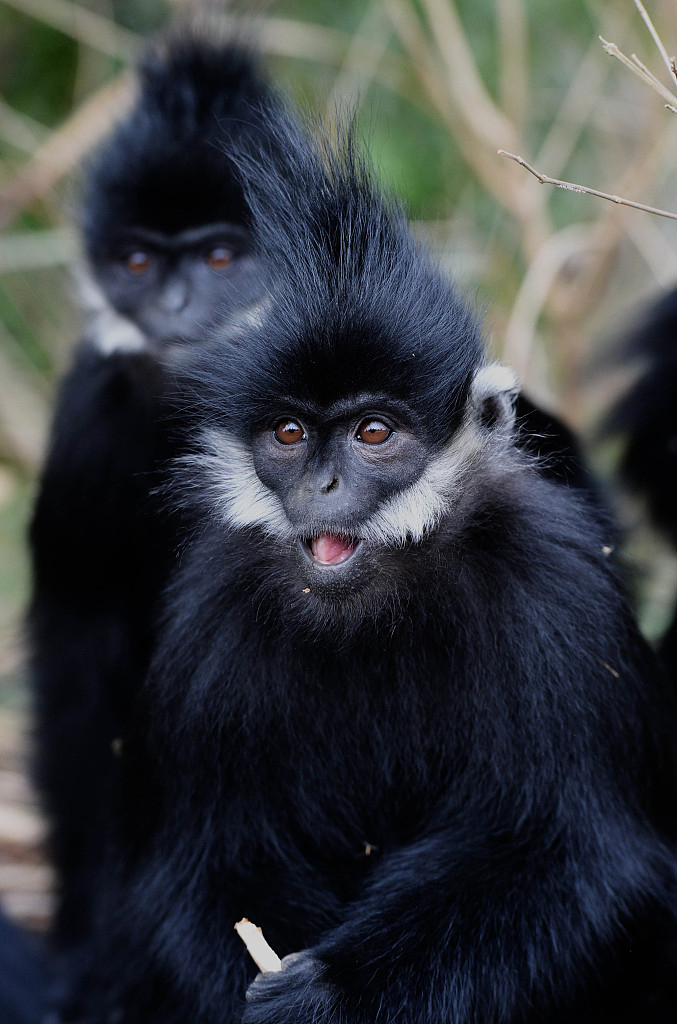
A closeup of a Francois's langur. /VCG Photo
A closeup of a Francois's langur. /VCG Photo
It has two stomach compartments, the first one contains bacteria that help break down the leaves before they enter the second stomach. This complicated digesting system is the reason why it has a big belly.
You can tell if its stomach is working when you hear it burp.
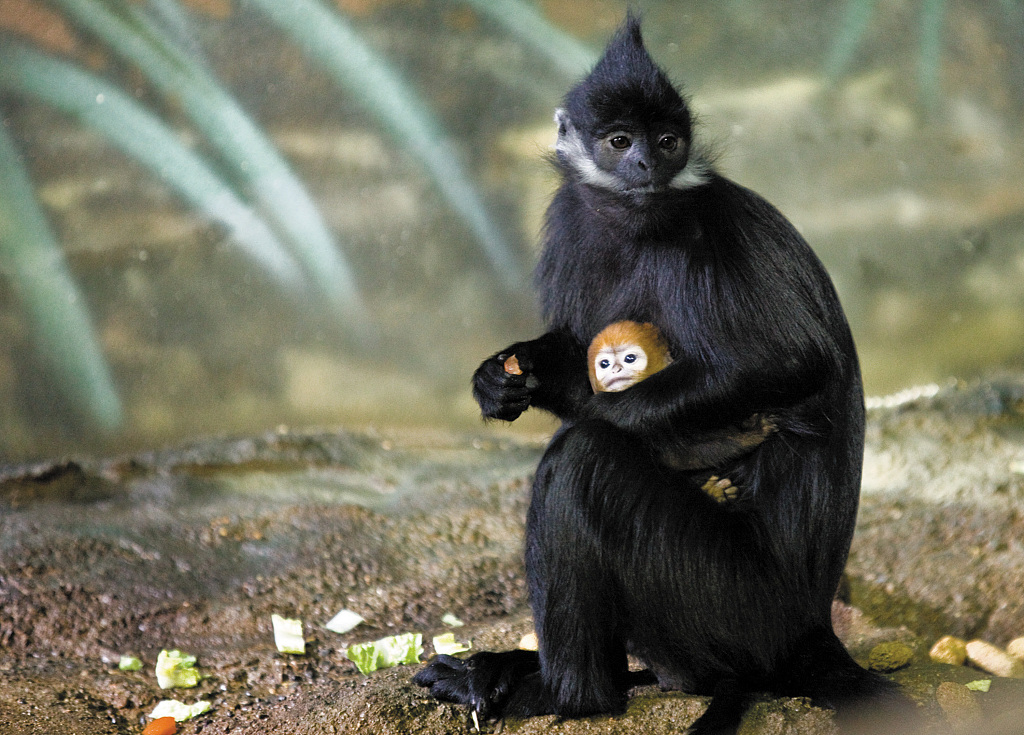
A mother langur with her baby. /VCG Photo
A mother langur with her baby. /VCG Photo
The Francois's langur normally only gives birth to one offspring at a time, but a rare case occurred in China last year of a langur mother giving birth to a pigeon pair at the Chimelong Safari Park in south China's Guangdong Province.
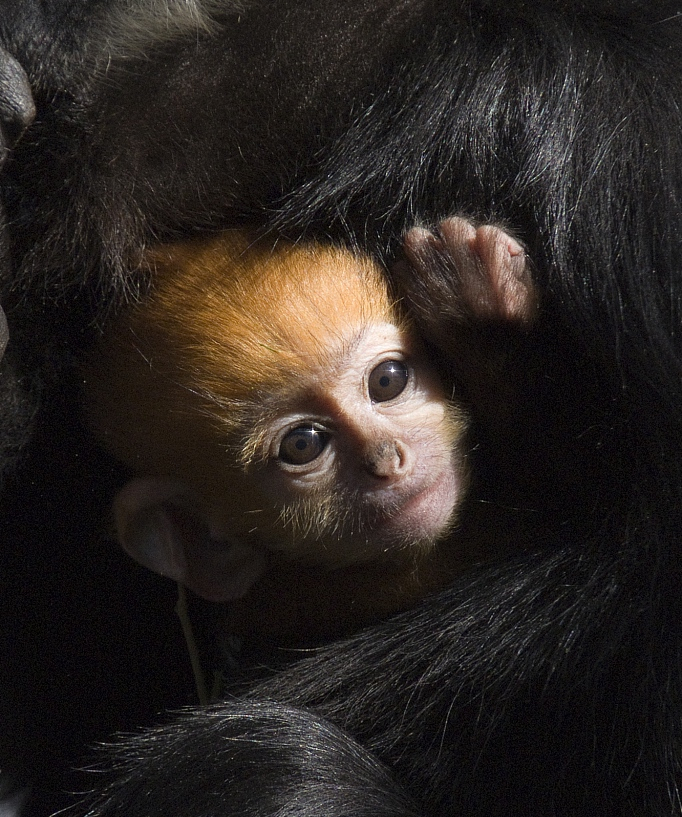
A newborn langur in its mother's arms. /VCG Photo
A newborn langur in its mother's arms. /VCG Photo
Newborn langurs are bright orange or red in color, and they do not change into the silky black color of their parents until around a year later.
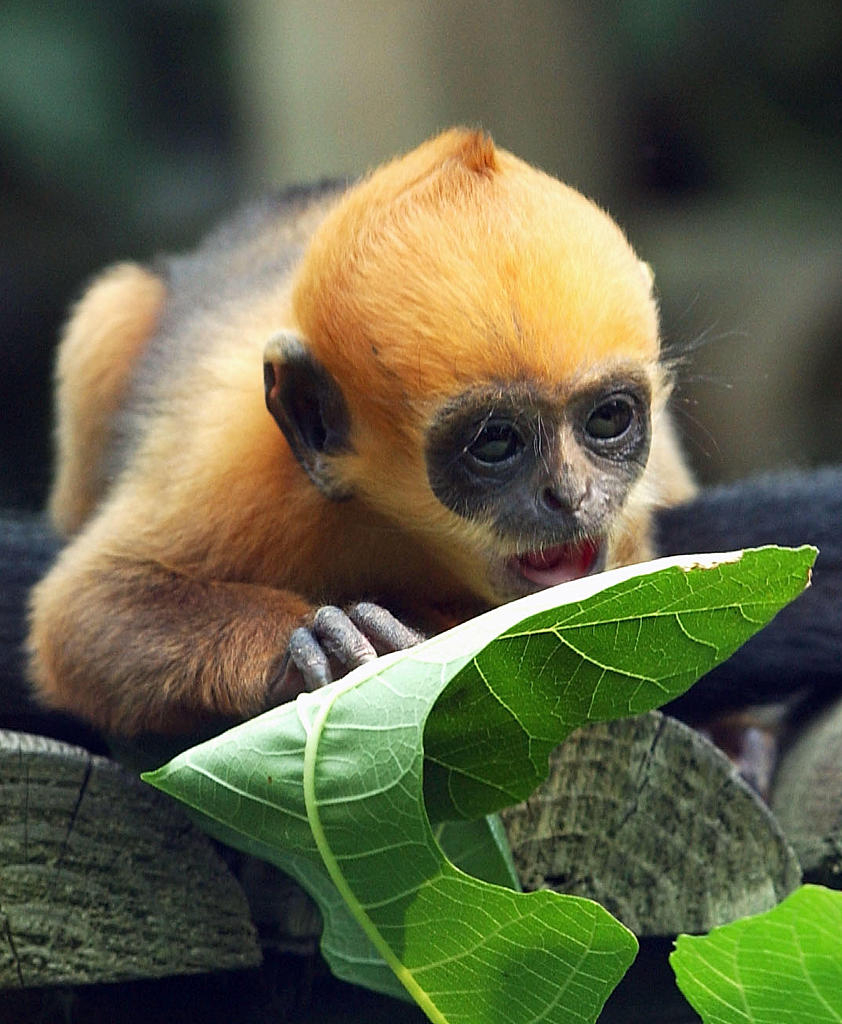
A baby langur's hair is starting to turn black. /VCG Photo
A baby langur's hair is starting to turn black. /VCG Photo
The females perform an act called allomothering, which means they allow other females to carry and to care for their babies.
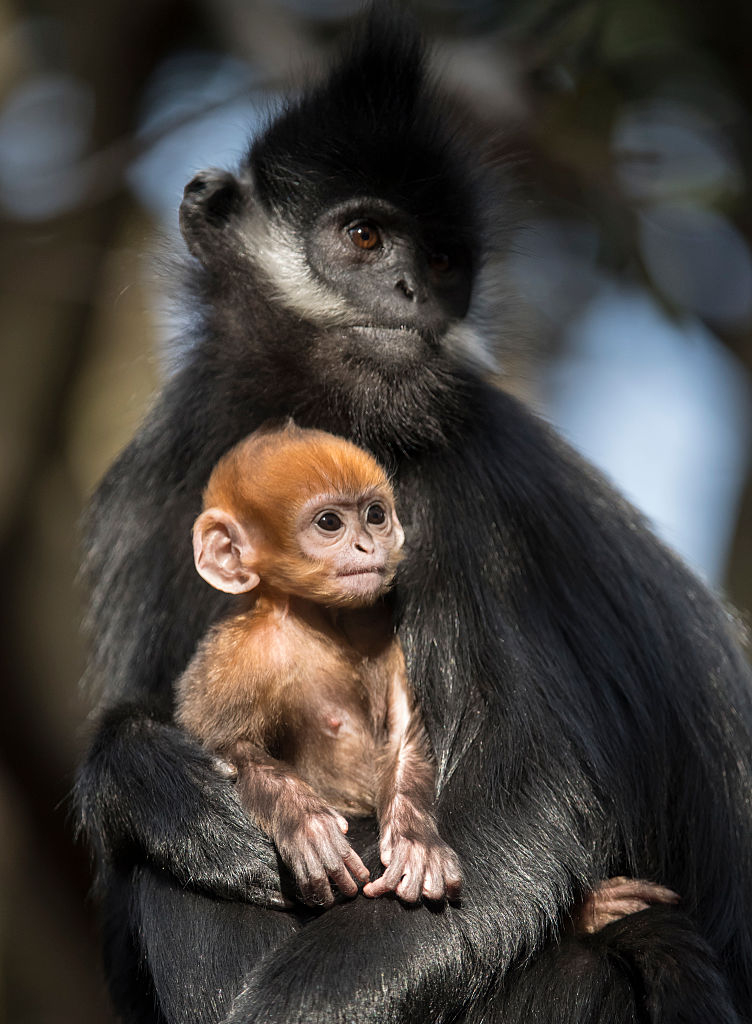
An adorable baby langur in its mother's arms. /VCG Photo
An adorable baby langur in its mother's arms. /VCG Photo
The adults emit a “ka” sound that can function as an alarm. They prefer to sleep in caves inside the limestone walls that characterize the karst landform. This smart choice of staying away from flatlands largely reduces the chance of being hunted by their predators.
(Cover designed by CGTN's Li Yueyun)
(If you want to contribute and have specific expertise, please contact us at nature@cgtn.com)

SITEMAP
Copyright © 2018 CGTN. Beijing ICP prepared NO.16065310-3
Copyright © 2018 CGTN. Beijing ICP prepared NO.16065310-3